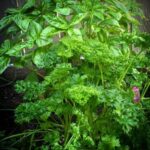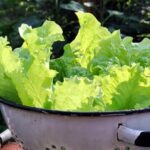Is sawdust good for vegetable gardens? Understanding the role of organic mulch in vegetable gardens is essential in determining the answer to this question.
Mulch serves as a protective layer over the soil, helping to retain moisture, suppress weeds, and regulate soil temperature. In this article, we will explore the benefits of using sawdust as a mulch in vegetable gardens, types of sawdust suitable for this purpose, how to prepare sawdust for use, applying sawdust mulch to different types of vegetable plants, tips for maintaining sawdust mulch, and the advantages and disadvantages of using sawdust in vegetable gardens.
Using sawdust as a mulch in vegetable gardens has its advantages. Not only does it help retain moisture and suppress weeds like other organic mulches, but it also contributes to improving soil structure as it decomposes. Additionally, sawdust can act as a barrier against certain pests and diseases that may impact vegetable plants. However, the type of sawdust used and proper preparation are key factors in ensuring its effectiveness.
Not all types of sawdust are suitable for use in vegetable gardens. Some types may contain chemicals or toxins that could harm the plants or affect soil pH levels.
Therefore, it is important to carefully consider which type of sawdust to use and how to prepare it before applying it to your vegetable garden. In the following sections, we will delve deeper into these considerations and provide guidance on how to make the most out of using sawdust as mulch for your vegetables.
Benefits of Using Sawdust as a Mulch in Vegetable Gardens
Improved Soil Structure and Moisture Retention
Sawdust is an excellent choice for mulching vegetable gardens due to its ability to improve soil structure and moisture retention. When applied as mulch, sawdust breaks down slowly, adding organic matter to the soil and enhancing its structure. This can result in better aeration, improved drainage, and increased water retention, all of which are beneficial for the healthy growth of vegetable plants.
Weed Suppression
Another significant benefit of using sawdust as mulch in vegetable gardens is its ability to suppress weeds. Sawdust acts as a natural weed barrier, preventing weed seeds from germinating and growing in the garden bed. This can save time and effort that would otherwise be spent on weeding, allowing vegetable plants to thrive without competition from unwanted plants.
Temperature Regulation
Sawdust mulch also plays a role in regulating soil temperature in vegetable gardens. During hot weather, it can help keep the soil cool, while in colder periods, it provides some insulation to protect the roots of the vegetable plants. This temperature regulation can contribute to overall plant health and productivity in the garden.
Types of Sawdust Suitable for Vegetable Gardens
When considering using sawdust as mulch in your vegetable garden, it’s important to select the right type of sawdust for the job. Not all sawdust is created equal, and some types may not be suitable for use in vegetable gardens. Here are a few factors to consider when choosing the best type of sawdust for your garden:
Hardwood vs Softwood Sawdust
One of the key considerations when selecting sawdust for your vegetable garden is whether it comes from hardwood or softwood trees. Hardwood sawdust, such as that from oak, maple, or ash trees, is generally preferred for vegetable gardens. Hardwood sawdust breaks down more slowly than softwood sawdust, which means it will provide longer-lasting benefits as a mulch.
Unfinished vs Treated Sawdust
It’s crucial to ensure that the sawdust you use in your vegetable garden is unfinished and untreated. Treated or finished sawdust may contain chemicals or preservatives that can be harmful to your plants and soil. Look for sawmills or woodworking shops that produce untreated hardwood sawdust specifically for gardening purposes.
Particle Size
The particle size of the sawdust also plays a role in its suitability for use in vegetable gardens. Fine sawdust tends to pack down and prevent water penetration, so it’s best to choose a coarser particle size for mulching purposes. Coarser sawdust allows for better air and water circulation around plant roots and helps prevent compaction.
By carefully considering these factors when choosing the right type of sawdust for your vegetable garden, you can ensure that you provide the best possible growing environment for your plants while reaping the benefits of using organic mulch.
How to Prepare Sawdust for Use in Vegetable Gardens
Sawdust can be a great organic mulch option for vegetable gardens, but it requires some preparation before use. Here are the steps to prepare sawdust for use in your vegetable garden:
1. Source the right type of sawdust: Not all types of sawdust are suitable for vegetable gardens. It is important to use untreated sawdust from hardwood trees such as oak, maple, or birch. Avoid using sawdust from pressure-treated or painted wood as these can be harmful to your plants.
2. Composting the sawdust: Due to its high carbon content, fresh sawdust can deplete nitrogen from the soil as it decomposes. To prevent this, mix the fresh sawdust with high-nitrogen materials such as grass clippings or kitchen scraps and let it compost for several months before using it in your vegetable garden.
3. Adjusting pH levels: Sawdust has a tendency to raise the acidity of the soil as it breaks down. If your soil pH is already on the acidic side, consider adding lime to neutralize the pH level before applying the sawdust mulch.
By following these steps, you can ensure that your sawdust is prepared and ready to provide maximum benefits to your vegetable garden without causing any harm to your plants’ growth.
Overall, prepared properly, sawdust can be an effective and cost-efficient option for mulching in vegetable gardens, providing numerous benefits including moisture retention, weed suppression, and improved soil health when used correctly. If you are considering using this mulch in your garden, be sure to follow these steps carefully for best results.
Applying Sawdust Mulch to Different Types of Vegetable Plants
When it comes to using sawdust as mulch in vegetable gardens, it is important to consider the specific needs of different types of vegetable plants. For root vegetables such as carrots, potatoes, and onions, sawdust can be an excellent choice due to its moisture retention properties and ability to promote healthy root development.
When applying sawdust mulch to these plants, it is important to ensure that the layer of mulch is not too thick, as this can inhibit the growth of the vegetables.
Leafy greens such as lettuce, spinach, and kale can also benefit from sawdust mulch. Sawdust helps regulate soil temperature, retains moisture, and prevents weed growth around these delicate plants. However, it is crucial to use a fine-textured sawdust for leafy greens since coarse sawdust can hinder their growth.
For fruiting vegetables like tomatoes, peppers, and cucumbers, sawdust can be used as a mulch to help maintain moisture levels in the soil. These types of plants benefit from a thicker layer of mulch compared to others since they require more consistent soil moisture for optimal fruit production. Additionally, applying sawdust mulch around fruiting vegetables can help prevent diseases by reducing soil splashing onto leaves and fruits during watering or rain.
| Vegetable Plant Type | Benefits of Sawdust Mulch |
|---|---|
| Root Vegetables (carrots, potatoes, onions) | Moisture retention properties and promotion of healthy root development. |
| Leafy Greens (lettuce, spinach, kale) | Regulation of soil temperature, retention of moisture, and prevention of weed growth. |
| Fruiting Vegetables (tomatoes, peppers,cucumbers) | Maintenance of soil moisture levels and prevention of diseases caused by soil splashing. |
Tips for Maintaining Sawdust Mulch in Vegetable Gardens
Maintaining sawdust mulch in vegetable gardens is crucial for its effectiveness in providing the necessary nutrients and moisture to the plants. One of the most important tips for maintaining sawdust mulch is to regularly check for any signs of compaction or crusting on the surface.
Compacted sawdust can prevent water from reaching the soil, while crusted sawdust can prevent air and water from penetrating the soil. Both of these scenarios can have a negative impact on the health and growth of your vegetable plants.
In addition, it is essential to replenish sawdust mulch as needed. Sawdust naturally breaks down over time, so it is important to regularly top up the mulch layer to maintain its depth and provide continuous benefits to your vegetable garden. However, it is important not to overapply sawdust, as this can lead to nitrogen depletion in the soil. As a general rule, a depth of 2-4 inches of sawdust mulch is sufficient for most vegetable plants.
Another important tip for maintaining sawdust mulch in vegetable gardens is to keep an eye out for any signs of pests or diseases. Sawdust can provide an ideal environment for certain pests such as slugs and snails, so it is important to monitor your garden regularly and take appropriate measures if any issues arise.
Additionally, be mindful of any mold or fungal growth on the surface of the sawdust mulch, as this could indicate poor air circulation or excessive moisture levels in the soil. Regularly turning and aerating the mulch can help prevent these problems and maintain a healthy growing environment for your vegetables.
Advantages and Disadvantages of Using Sawdust in Vegetable Gardens
Sawdust has become a popular choice for mulching vegetable gardens due to its numerous benefits. One advantage of using sawdust as a mulch in vegetable gardens is its ability to retain moisture in the soil. This can be especially beneficial during hot and dry periods, as it helps to conserve water and reduce the need for frequent watering. Sawdust also acts as an insulator, keeping the soil cool in the summer and providing protection from temperature fluctuations.
However, there are also some disadvantages associated with using sawdust in vegetable gardens that gardeners should consider. One potential drawback is that fresh sawdust can rob nitrogen from the soil as it decomposes, which can negatively impact the growth of nitrogen-dependent plants. Additionally, if not prepared properly, sawdust can create an environment conducive to fungal growth and may introduce pests into the garden.
It’s important for gardeners to weigh these advantages and disadvantages when considering whether to use sawdust in their vegetable gardens. Proper preparation and application techniques can help mitigate some of the potential drawbacks, but it’s also worth exploring alternative mulch options that may better suit specific gardening needs or preferences.
| Advantages of Sawdust Mulch | Disadvantages of Sawdust Mulch |
|---|---|
| Retains moisture in soil | May rob nitrogen from soil |
| Acts as an insulator | Potential for fungal growth if not prepared properly |
| Reduces need for frequent watering | Possible introduction of pests into the garden |
Alternative Mulch Options for Vegetable Gardens
When considering the best mulch for your vegetable garden, sawdust may not be the right choice for everyone. Fortunately, there are several alternative mulch options that can provide similar benefits and help maintain a healthy garden.
Here are some alternative mulch options to consider:
1. Straw or Hay: Organic straw or hay is a popular choice for vegetable gardens as it helps retain moisture, suppress weeds, and break down slowly to improve soil quality.
2. Grass Clippings: Using grass clippings as mulch can help protect the soil, conserve moisture, and improve soil structure as they decompose. However, be cautious if the grass has been treated with pesticides or herbicides.
3. Leaves: Shredded leaves make an excellent mulch material that provides insulation, retains moisture, and adds organic matter to the soil as they break down.
4. Pine Needles: Pine needles are particularly beneficial for acid-loving plants like tomatoes and strawberries. They also help improve soil structure and suppress weed growth.
5. Compost: Adding a layer of compost to your vegetable garden not only serves as a protective covering but also enriches the soil with nutrients as it decomposes.
Each of these alternative mulch options offers its own unique benefits and can be suitable for various types of vegetables depending on their specific needs. Consider experimenting with different types of mulches to find the best option for your garden.
Conclusion
In conclusion, the use of sawdust as a mulch in vegetable gardens can be a beneficial option for gardeners. Sawdust offers numerous advantages, such as weed suppression, moisture retention, and soil insulation, which can contribute to the overall health and productivity of the vegetable plants. Additionally, sawdust mulch can break down over time, adding organic matter to the soil and improving its structure.
When using sawdust as mulch in vegetable gardens, it is important to consider the type of sawdust being used and how it is prepared. Certain types of wood may contain toxins or acidity that could be harmful to the vegetables, so it is essential to select appropriate sawdust from untreated wood. Preparing the sawdust by aging or composting it beforehand can also help mitigate any potential negative effects on the garden.
While there are some disadvantages to using sawdust in vegetable gardens, such as nitrogen depletion and potential issues with decomposition, these can often be managed through proper maintenance and fertilization techniques. Ultimately, making an informed decision about whether sawdust is the right choice for your vegetable garden will depend on individual gardening goals and considerations.
It is essential to weigh both the advantages and disadvantages of using sawdust in comparison to alternative mulch options when determining what will work best for your specific garden needs.
Frequently Asked Questions
Is Sawdust Good for Tomatoes?
Sawdust can be a good addition to tomato plants when used in moderation. It can help with moisture retention, weed suppression, and as it breaks down, it can also enrich the soil with organic matter. However, excessive use of sawdust can deplete nitrogen in the soil, which could negatively impact tomato plant growth.
Can Vegetables Grow in Sawdust?
Yes, certain vegetables can grow in sawdust or a sawdust-soil mixture. Sawdust can be useful for root vegetables like carrots and potatoes as long as it is balanced with other organic materials to provide the necessary nutrients for plant growth. It’s important to monitor the soil pH and nitrogen levels when using sawdust for vegetable gardening.
What Are the Disadvantages of Sawdust?
One disadvantage of using sawdust as a mulch or soil amendment is its potential to tie up nitrogen in the soil as it decomposes. This can temporarily reduce the availability of nitrogen to plants unless it’s balanced out with additional nitrogen-rich fertilizers or amendments.
Additionally, using sawdust from treated wood or containing chemicals can harm plant growth and pose environmental risks. Overuse of sawdust without proper mixing with other organic materials could also disrupt the natural balance of nutrients in the soil.

If you’re looking to get into vegetable gardening, or are just looking for some tips on how to make your current garden better, then you’ve come to the right place! My name is Ethel and I have been gardening for years. In this blog, I’m going to share with you some of my best tips on how to create a successful vegetable garden.





